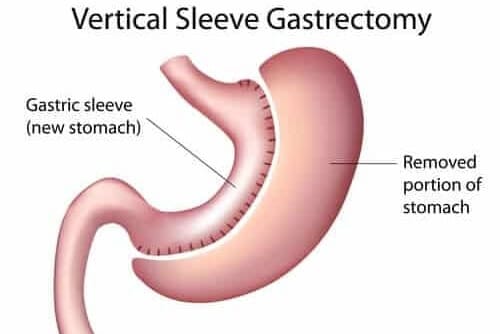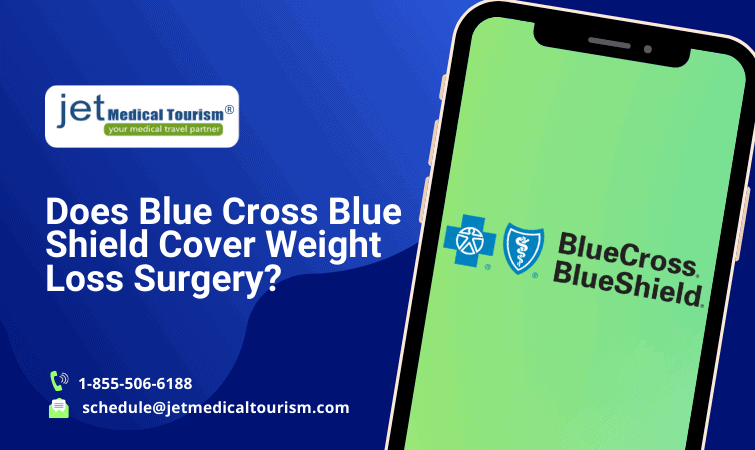Benefits of Gastric Sleeve Surgery
 Gastric Sleeve Surgery, otherwise referred to as vertical sleeve gastrectomy is a surgical weight-loss process in which the stomach is reduced to about 15 percent of its original size. This surgical removal of the stomach occurs along the greater curvature, resulting in a sleeve or tube-like structure.
Gastric Sleeve Surgery, otherwise referred to as vertical sleeve gastrectomy is a surgical weight-loss process in which the stomach is reduced to about 15 percent of its original size. This surgical removal of the stomach occurs along the greater curvature, resulting in a sleeve or tube-like structure.
In more detail, gastric sleeve surgery is a restrictive type of weight loss surgery that limits the stomach’s capacity for food as well as decreases the sensation of hunger.
The procedure is carried out laparoscopically through bodily incisions, with the aid of a camera and is irreversible. Although, chances do exist that the stomach may undergo dilatation (expand or become larger) later on in life.
The key goal of gastric sleeve surgery focuses on achieving weight loss by limiting food intake, rather than altering food absorption (as obtainable with a gastric bypass).
Statistics from successful cases of vertical sleeve gastrectomy surgeries puts excess weight loss at 55 percent in two years after the procedure is performed while individual results of excess weight loss ranged from 33% to 85% in studies of gastric sleeve patients.
Advantages of Vertical Sleeve Gastrectomy (VSG)
The general consensus is that gastric sleeve surgery is a safe and effective alternative to weight loss management compared to other common options such as gastric bypass and gastric banding.
In practical terms, vertical sleeve gastrectomy combines the benefits of the latter two procedures without few of the complications.
Several of the advantages to undergoing the gastric sleeve surgery are as follows:
- Gastric sleeve surgery facilitates weight loss by restricting the amount of food that can be eaten by the patient.
- Reduces hunger and other associated cravings since the surgery removes part of the stomach that produces the hunger-stimulating hormone ghrelin.
- After surgery, digestion occurs normally as the digestive system is not affected.
- There is no fear of mal-absorption or a nutritional deficiency since the small intestine is not by-passed or re-routed.
- The chances of developing ulcers are reduced as compared with gastric bypass surgery.
- The patient does not experience dumping syndrome after gastric sleeve as the stomach outlet (pyloric valve) remains intact. This is not the case in gastric bypass surgery.
- It is a simpler procedure than gastric bypass or duodenal switch surgery.
- Gastric sleeve surgery is suitable for morbidly obese patients.
- The process does not require the insertion of a gastric band into the body
- The process does not need adjustments or fills.
- Gastric sleeve surgery comes across as a safer medical intervention/weight loss procedure, especially for patients who grapple with other health problems. The absorption process of nutrients in the body is not altered.
- The process is flexible enough for conversion to gastric bypass or duodenal switch if the situation demands.
- Statistics reveal excess weight loss gains for stand-alone procedure peaks at 60 to 70% at two years.
Post Operative Diet After Gastric Sleeve Surgery
Following vertical sleeve gastrectomy surgery, patients are placed on a liquid diet for two weeks, as their bodies heal. The diet slowly moves from soft to solid foods as time progresses. At about 4 to 6 weeks after surgery, most patients will usually be able to consume solid meals.
Find out if you qualify for the Tijuana Mexico Gastric Sleeve by clicking through to our online application form or contact us today to find out more.
[button link=”https://jetmedicaltourism.com/apply/” type=”big” color=”blue” newwindow=”yes”] See If You Pre-Qualify[/button]
[button link=”https://jetmedicaltourism.com/contact/” type=”big” color=”blue” newwindow=”yes”] Contact Us Today[/button]



